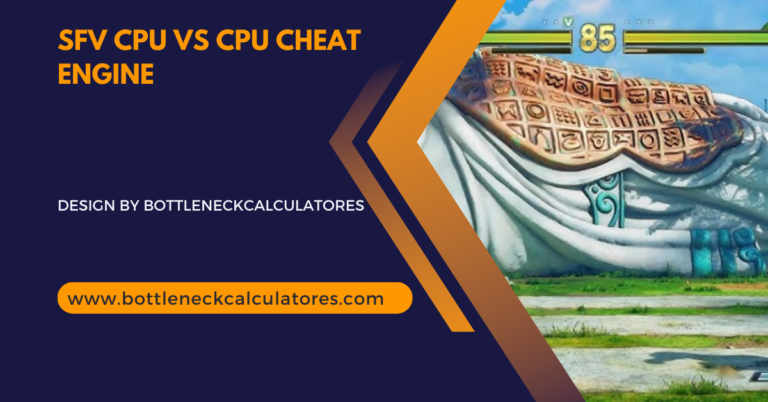Gpu Memory Clock At 9500 – Understanding Its Impact on Performance!
A 9500 MHz GPU memory clock boosts gaming, video editing, 3D rendering performance, ensuring efficiency and speed.
This article will focus on the significance of a GPU memory clock at 9500 MHz, exploring its benefits, performance implications, and whether it’s the right choice for your setup.
Table of Contents
What Is GPU Memory Clock Speed?
The GPU memory clock refers to the speed at which the memory on a graphics card operates. Measured in megahertz (MHz), it determines how quickly the GPU can access and process data from its onboard memory. A higher memory clock results in faster data transfer, improving the performance of tasks such as gaming, video editing, and 3D rendering.
The Meaning of a GPU Memory Clock at 9500 MHz:
When a GPU memory clock is rated at 9500 MHz, it means the graphics card’s memory operates at this high frequency. This is typically seen in high-end or mid-tier GPUs designed for demanding applications. Memory clock speeds of this level enable faster texture loading, better frame rates, and overall smoother performance.
Benefits of a GPU Memory Clock at 9500 MHz:
- Enhanced Gaming Performance: Faster memory clocks reduce latency, leading to better rendering and higher FPS in games. Ideal for high-resolution gaming (1440p and 4K).
- Improved Multitasking: Allows seamless handling of multiple graphics-intensive applications, such as streaming while gaming.
- Optimized Video Editing: Accelerates tasks like timeline scrubbing, rendering, and exporting large video files.
- Superior 3D Rendering: Increases the efficiency of rendering complex 3D models or animations, making it a valuable tool for professionals.
Also Read: Cannot Run Agent On Guest Gpu – Https://Dat.To/Guestgpu – Troubleshooting Guide!
How Does a 9500 MHz Memory Clock Compare to Other Speeds?
Lower Speeds (<9500 MHz):
- Slower data processing, suitable for basic gaming and non-demanding applications.
- Lower power consumption but may bottleneck high-end systems.
Higher Speeds (>9500 MHz):
- Found in top-tier GPUs, providing ultra-smooth performance for 4K gaming and advanced AI workloads.
- May produce more heat and require better cooling solutions.
Is a 9500 MHz Memory Clock Right for You?
- For Gamers: If you’re a gamer looking to run modern AAA titles at high settings and resolutions, a GPU with a memory clock of 9500 MHz is an excellent choice.
- For Creators: Content creators working with 4K video editing, 3D rendering, or complex graphics will benefit from the increased speed and responsiveness.
- For General Users: Casual users may not notice significant differences compared to lower memory clock speeds, making this feature less critical.
Tips for Optimizing GPU Performance:
- Keep Drivers Updated: Regularly update your GPU drivers to ensure compatibility and optimal performance.
- Monitor Temperatures: High memory clock speeds can generate heat. Use cooling solutions like fans or liquid cooling to maintain safe temperatures.
- Overclock Wisely: Advanced users can overclock their GPUs to achieve higher memory clock speeds, but ensure stability and proper cooling.
- Choose Compatible Hardware: Pair your GPU with a compatible CPU and sufficient RAM to avoid bottlenecks.
Popular GPUs Featuring a Memory Clock at 9500 MHz:
Several GPUs in the market boast memory clock speeds around 9500 MHz, including:
- NVIDIA GeForce RTX 3060 and 3060 Ti
- AMD Radeon RX 6600 XT
- NVIDIA GeForce GTX 1660 SUPER
FAQ’s
1. What does GPU memory clock do?
It determines the speed of data transfer between the GPU and its memory, impacting gaming and rendering performance.
2. Is a higher GPU memory clock always better?
Generally, yes, but the actual benefits depend on your use case and hardware setup.
3. Can I overclock a GPU memory clock at 9500 MHz?
Yes, but ensure proper cooling and system stability to avoid damage.
4. Does memory clock affect gaming?
Yes, it improves frame rates, reduces stuttering, and enhances overall gaming performance.
5. What is the difference between core clock and memory clock?
Core clock measures GPU processor speed, while memory clock refers to VRAM speed.
6. How can I check my GPU’s memory clock speed?
Use tools like GPU-Z, MSI Afterburner, or your GPU’s driver software.
7. Do higher memory clocks consume more power?
Yes, faster memory speeds increase power usage and generate more heat.
8. Is a GPU with a memory clock of 9500 MHz future-proof?
It’s suitable for current and upcoming tasks, but technological advancements may eventually outpace it.
Conclusion
A GPU memory clock at 9500 MHz strikes a balance between performance and efficiency, making it an excellent choice for gamers and professionals alike. Whether you’re aiming for smoother gameplay, faster rendering, or multitasking, this specification ensures your GPU can handle modern workloads effectively. Combine it with compatible hardware and proper maintenance to unlock the full potential of your graphics card!







